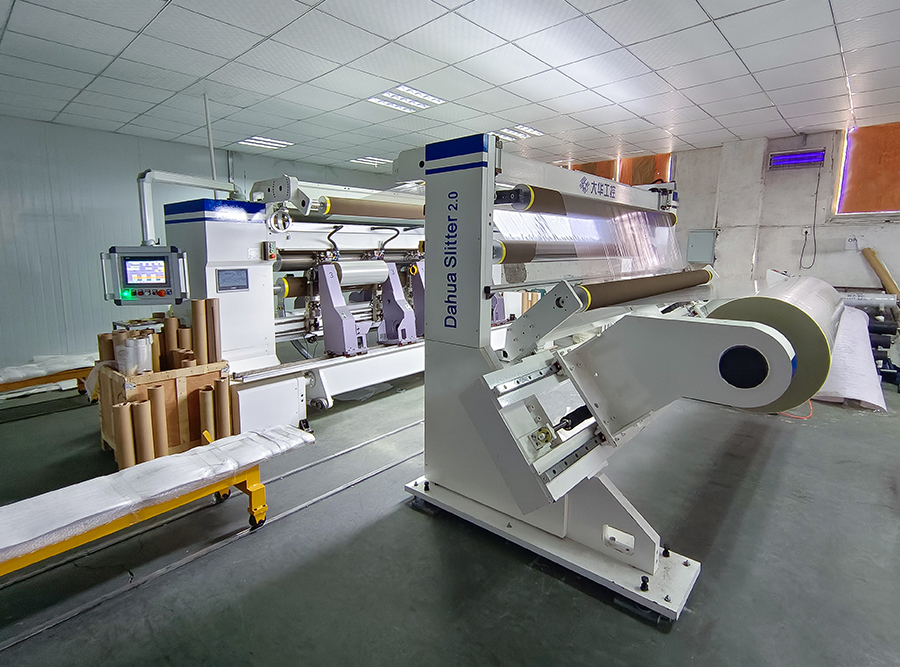The specific considerations and limitations for the types of plastic films that a
Secondary Slitter can process depend on the design, features, and capabilities of the particular machine. Here are detailed considerations regarding the types of plastic films:
Material Composition:
Secondary Slitters are generally designed to process a variety of plastic films, including common materials like polyethylene (PE), polypropylene (PP), polyester (PET), and others. However, specialty films with unique compositions may pose challenges. Considerations include the film's flexibility, stretchability, and adhesive properties.
Specialty Films:
Certain specialty films may have unique characteristics, such as high-tack adhesives, metalized layers, or conductive coatings. The Secondary Slitter must be evaluated for its compatibility with these specialty features to avoid damage to the film or compromising the slitting quality.
Film Thickness Range:
The machine's specifications should be reviewed to determine the range of film thicknesses it can effectively handle. Some Secondary Slitters may be optimized for thin films, while others are capable of processing thicker gauge materials.
Surface Treatments and Coatings:
Films with surface treatments or coatings, such as anti-static coatings, release coatings, or printable surfaces, may require special handling to prevent damage during the slitting process. The Secondary Slitter should be equipped to handle these coatings without compromising film integrity.
Optical Properties:
Films with optical properties, such as clear or tinted films, may require careful handling to avoid scratching or visual defects. The slitting mechanism and material handling systems should be designed to maintain optical clarity.
Antistatic Measures:
Films prone to static buildup, especially during the slitting process, may require additional antistatic measures. Antistatic bars or systems should be considered to minimize the risk of static-related issues like dust attraction or film sticking.
Stretch Films:
Stretch films, used in applications like pallet wrapping, have unique characteristics. The Secondary Slitter must be designed to handle the stretch and recovery properties of these films without causing deformation or inconsistencies in the slitting process.
Adhesive Films:
Films with adhesive layers or backing may pose challenges during slitting. The machine should be equipped to prevent adhesive buildup on blades and ensure clean cuts without affecting the adhesive properties of the film.
Handling of Fragile Films:
Fragile films, including those used in electronics or optical applications, require gentle handling to avoid tearing or damage. The slitting mechanism and tension control systems should be optimized for processing these delicate materials.
Multi-Layered Films:
Films with multiple layers or laminations may require precise control over the slitting process to maintain the integrity of each layer. The Secondary Slitter should be capable of handling multi-layered films without causing delamination or separation.
Temperature Sensitivity:
Some films may be sensitive to temperature changes. If the slitting process generates heat, it's important to consider the impact on film properties. The machine should be designed to minimize heat transfer and maintain material stability.
Trial Runs and Testing:
Before processing specialty films on a large scale, conducting trial runs and testing the Secondary Slitter with a small quantity of the material can help identify any potential issues and ensure that the machine can handle the specific film properties effectively.

